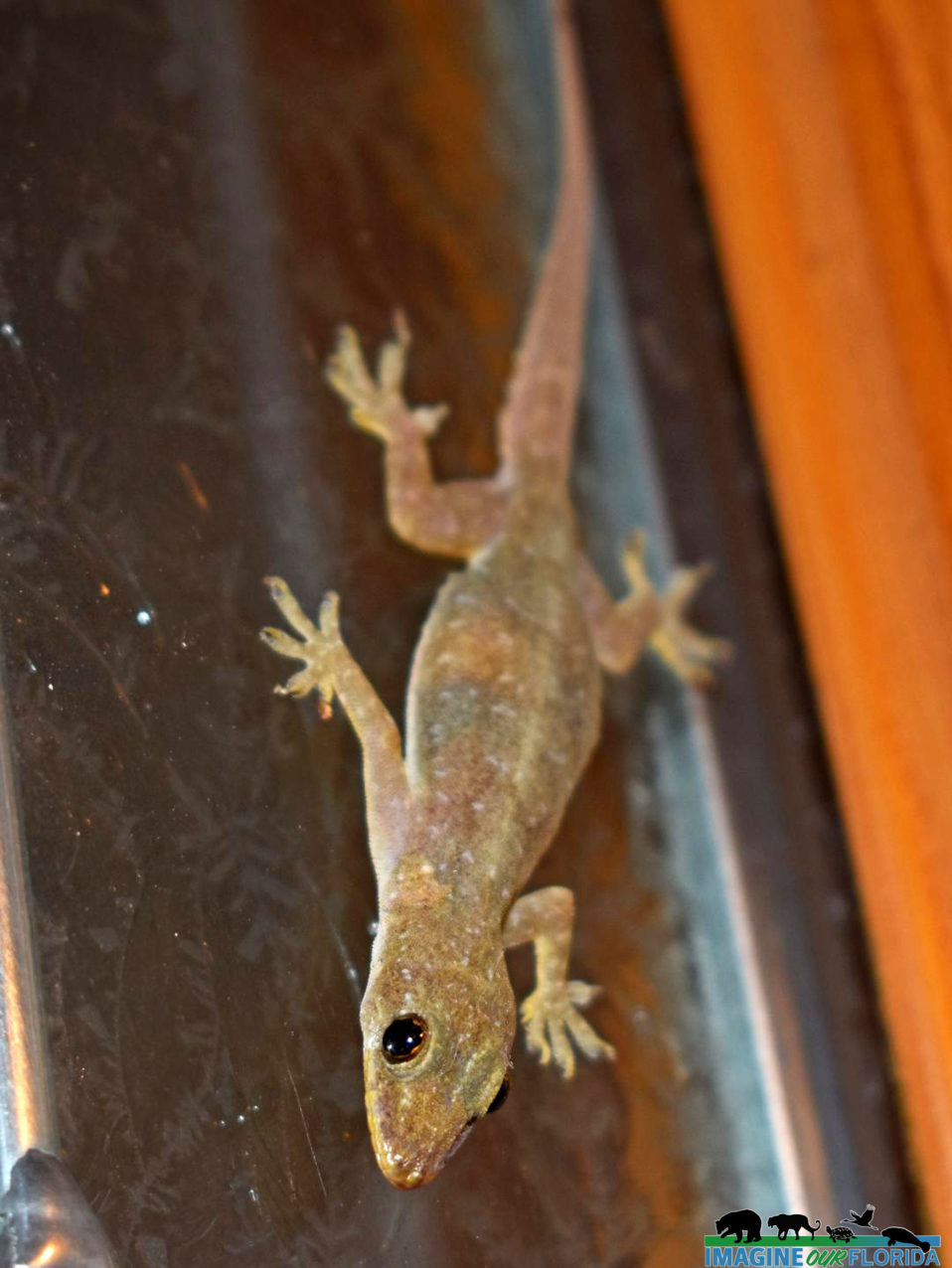Indo-Pacific Gecko
Many of you may have seen these little brown lizards scurrying around the lights outside of your house at night. But did you know that this little girl holds an amazing secret? She is an Indo-Pacific Gecko, Hemidactylus garnotii, and she, like all of her sisters, is parthenogenic! As her name implies, this little Indo-Pacific gecko is not native to Florida, but instead is from southeast Asia. But, its ability to hide out in shipping containers and its unique reproductive strategy has made it easy for this species to spread.
Parthenogenesis is a natural form of asexual reproduction where the embryo is able to develop without the introduction of a sperm cell. There are several different types of parthenogenic reproduction, but let’s look at this little gecko species specifically. Indo-Pacific geckos are all female and reproduce by apomictic parthenogenesis. This means egg cells develop directly into embryos and are genetic clones of the mother. In Indo-Pacific geckos, the method of reproduction is via obligate parthenogenesis. This means this species reproduces entirely through asexual means.
So, since this species can spread with a single individual, it’s no wonder they have become such a widespread species. The earliest known specimen was found in Florida in 1963 and arrived through cargo shipments. They can be found over much of the state, but seem to be found mostly around man-made structures. The impacts of this non-native species are unknown at this time. There are several species of gecko in Florida that are also non-native, and look similar to the Indo-Pacific gecko, the most common of these is the Mediterranean gecko.
The Indo-Pacific Gecko can be identified by its smooth skin, toe pads, and orange color under the tail. In the images, you can see two eggs developing in this female right through her skin! They are insectivores and will hang around your porch lights at night in hopes of catching an easy meal. They have many predators in Florida. Snakes, large frogs, birds, and other nocturnal lizard eaters all make this gecko part of their diet.
Photo Credit: Andy Waldo







Recent Comments